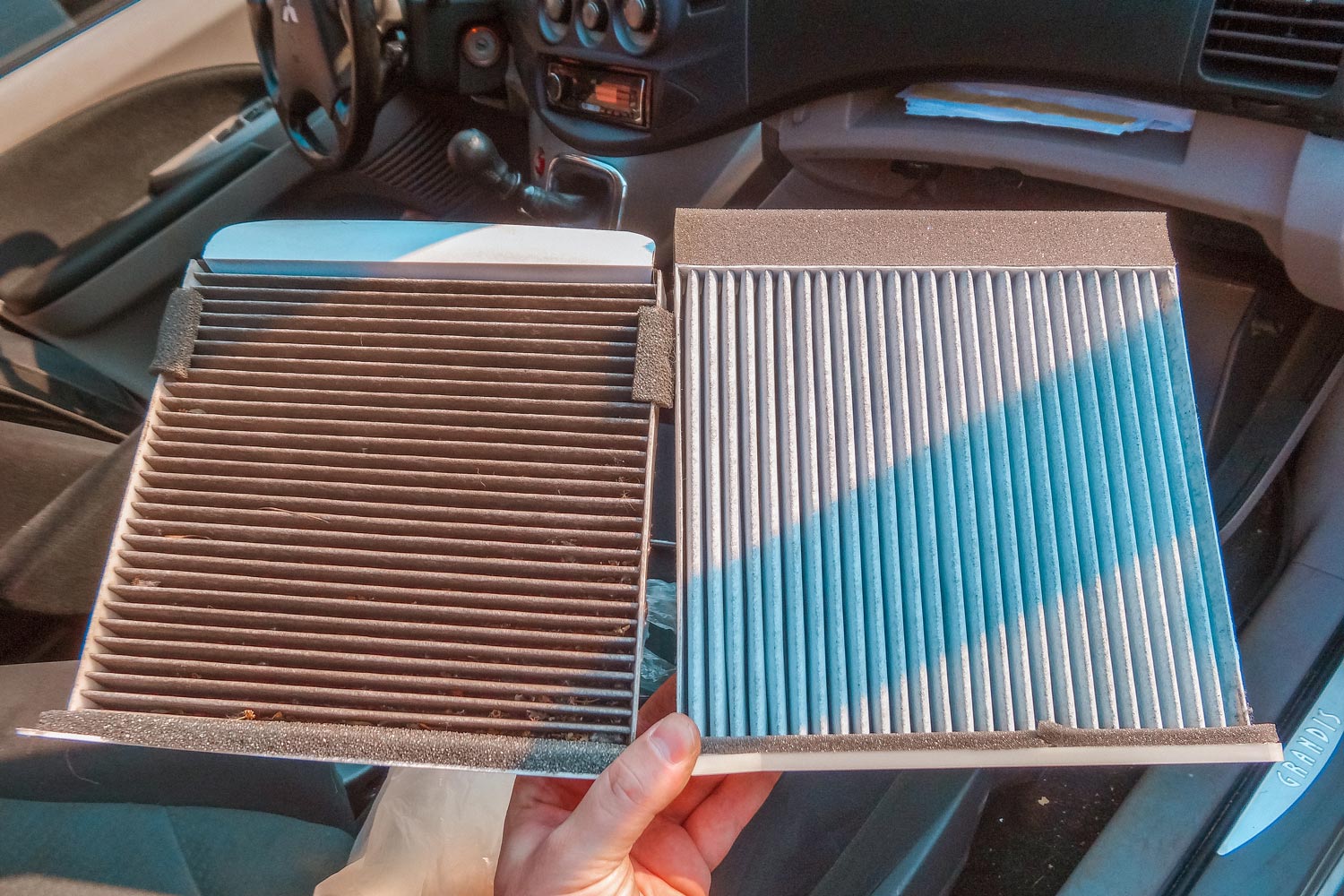When Should You Replace Your Cabin Air Filter?
This DIY project will breathe new life into your car's interior.
 Shutterstock
Shutterstock
In the car world, the term “air filter” refers to two different parts. The first filters the air going into your engine. The second, one fewer drivers think about, is the cabin air filter. It filters the air you and your passengers breathe. Replacing the cabin air filter is a task that’s relatively easy, quick, and should be done regularly. All vehicles will have an engine air filter, while many (but not all) newer cars have a cabin air filter. Check your owner’s manual to find out.
The cabin air filter plays a crucial role in your car’s heating, ventilation, and air conditioning (HVAC) system. It traps allergens (like pollen), dust, bacteria, and other pollutants before they get pumped out of your car’s air vents. While there is no “replace the cabin air filter” light on the dashboard, signs of a dirty or clogged filter include weak airflow even when the fan is set to its highest speed or an unpleasant smell coming from the vents.
Not all cabin air filters are created equal. Charcoal and activated carbon filters tend to be more effective than standard filters because they trap fumes and smells, according to manufacturer Premium Guard Filters. Another manufacturer, Mann+Hummel, notes High Efficiency Particulate Air (HEPA) filters keep even tiny particles out of your car’s ventilation system. However, some of the more obstructive air filters can restrict the amount of air that comes out of the vents if the system is not designed for that kind of filter.
When Should You Replace Your Cabin Air Filter?
How often you need to replace the cabin air filter depends largely on the type of car you drive, the conditions in which you drive, and the type of filter you have installed. Most manufacturer-recommended intervals vary between 15,000 and 30,000 miles.
Toyota’s maintenance guide recommends that Corolla drivers inspect the cabin air filter every 15,000 miles or 18 months and replace it every 30,000 miles or 36 months, for example, while Ford asks F-150 owners to replace it every 20,000 miles. Toyota also notes drivers who live in areas where pollen is a problem or who regularly travel on dirt roads or in urban, dusty, or desert areas may need to change it more often. And, if you just bought a used car, it’s a good idea to change the cabin air filter if you don’t know when it was last replaced.
Replacing Your Cabin Air Filter
The first step is to locate the cabin air filter. This information is often mentioned in the owner’s manual, but a search online can also help you find it.
In many cars, including newer Toyota models, it’s located behind the glovebox, though Honda points out it can sometimes be accessed via the front passenger-side footwell or the engine bay. If it’s behind the glovebox, Toyota explains you’ll need to empty it and remove the screws securing it to the dashboard.
Set them aside, gently pull the glovebox out of the dashboard, and you’ll see the filter’s housing. Open it, carefully remove the filter, and throw it away. It’s likely dirty so be careful to avoid spreading dust, dead leaves, and other debris all over the cabin.
NAPA filters recommends vacuuming the inside of the housing before installing a new filter. When it’s clean, take the new filter out of the box and look for a set of arrows that signal the proper installment orientation. Drop the filter into the housing, close the housing, re-install the glovebox, and you’re done.
This is a simple task that requires no special tools and only takes about 15 minutes for a typical car, but it can also be done by a mechanic. The cost of replacing a cabin air filter varies from car to car and from dealer to dealer. Mainstream brands typically charge between $30 and $80 (including parts and labor). Toyota dealers peg the cost between $30 and $70, for example, while Volkswagen and Chevrolet dealers quote between $40 and $80. Dealers that sell luxury cars, such as Audi, can charge more than $90.
Written by humans.
Edited by humans.
 Ronan Glon
Ronan GlonRonan Glon is an American journalist and automotive historian based in France. He enjoys working on old cars and spending time outdoors seeking out his next project car.
Related articles
View more related articles